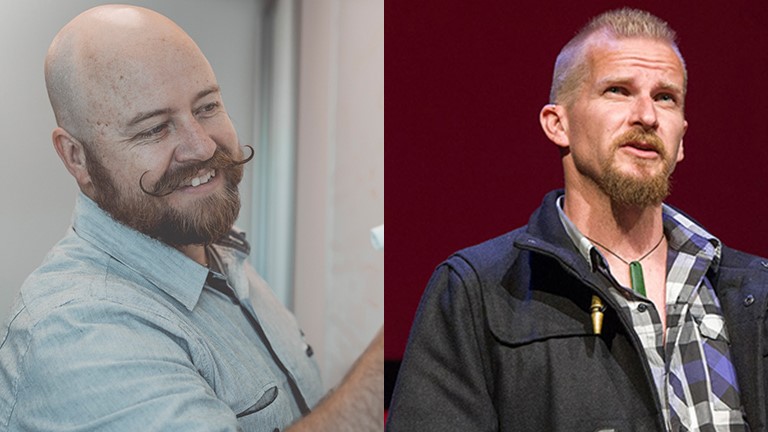With 24/7 connectivity, how do you create a balance between work and life when you’re always ‘switched on’? We asked some busy people for tips on how to both get away from technology and use it to a balanced advantage.
The issues getting in the way
“Before smartphones and email syncing, we tended to have greater separation between work and non-work time. As that separation has diminished, many feel like they never have time to recharge the batteries,” says Simon Moutter, Managing Director of Spark New Zealand. “We’re not going to change the reality of the online world, so we need to manage the balance through discipline combined with flexibility, as paradoxical as that sounds.”
Lindsay Cowley is a senior advisor with McKinsey & Co and the director of Agile Enterprises Limited. From 2017-2018 he was the General Manager of Agile implementation at Spark NZ.
The New Zealand media has already covered Spark's transformation from a traditional, hierarchical organisation to an Agile one.
But before we get into how you could make your own transition to Agile, let's have a quick recap:
Agile is not just a new process and a team structure, but a culture shift. It's a mindset. It’s about thinking of organisations as fluid organisms, able to respond to changing customer needs and market conditions. It’s about empowering teams by letting them own end-to-end business operations.
Agile ways of working were first adopted in IT development teams. Agile has a foundation in the Manifesto for Agile Software Development, written in 2001. Many of the Silicon Valley start-ups then picked it up. And it's now starting to spread through traditional companies wanting to unlock the benefits of Agile. Read the Agile Manifesto
Spark shifted its entire organisation to Agile. That enabled us to develop programmes at scale to encourage shifts in mindset and behaviour.
Many other organisations undertaking a similar transformation are doing so in a staged manner. Those that do are protecting their Agile teams from the traditional side of the organisation. This minimises the interactions between the old world and the new. Thus, it gives the new processes, structures, mindsets and behaviours a chance to develop into habits.
So, how do you start shifting your business to Agile ways of working?
It starts with the why: Why are we changing to Agile? Moving to Agile is a huge amount of work. It touches every part of your business, so you need to be very clear on what you are looking to achieve.
It pays to invest time upfront to work this through and to be able to articulate your change story to your teams, your customers and your suppliers. It might sound obvious when written down, but many of the companies I’ve seen fail on this journey couldn’t articulate why they were doing it.
This, your "why", is the start of finding your Agile model. What has led you to consider Agile and what do you hope to get out of the transformation? Speed? Productivity? Team engagement? Improved customer interactions? Net Promoter Score? Growth? What problem are you trying to solve?
We at Spark set about using Agile methods to enhance three areas of our business model:
- Customer centricity: Increasing the visibility of end customers within everything we do
- Employee engagement: Empowering our people to make the right decisions at the right time
- Speed to market: Improving the speed with which we develop new ideas and capability
Once you have clarity of your own reasons for moving to Agile, many of the other choices you'll need to make become obvious.
How much change has your business undergone before now?
Before you take the first step, you should pause and reflect on the amount of tolerance for change your business has.
Adopting Agile requires a review of all aspects of your business. Look at everything from your business strategy, your structures, processes and culture to how you use technology.
If this is the first really big change you’ve ever made, it might not be the right time. An Agile transformation may just be too big a shock to your organisation’s system.
Don’t do the splits
If this is the move for you – make it a "boots and all" move. We’ve seen many organisations say that they are trialling Agile in one team, or project. This is like one of those YouTube videos: The person has one foot in the dinghy, one on the pier, the boat is drifting off and the person is doing the splits. Your Agile team will be the dinghy drifting off.
When the Agile team get underway they will most likely move with a pace and a purpose that leaves the rest of the organisation behind. The Agile team may get frustrated because everything else is too slow and bureaucratic, while the traditional part of the business will likely consider the Agile team as too pushy and demanding and making decisions without following the right channels.
Unless they can be adequately protected, this conflict leads the Agile pilot to fail and shut down.
At Spark we solved this by moving at pace. We found the Agile model that works for each part of the business and moved as quickly as possible to adopt this new working process in each sector of the business.
It might be a bit messy at first, but if you're clear on why you're moving, then it's just a part of getting to the prize.
And don’t lift and shift
There are many different Agile models that you could adopt. In fact, you could (and probably should) choose to adopt different Agile models within the different teams of your organisation, depending on the type of work they undertake.
This is where the art comes in. You need to find the right model. Or, you can customise your own so that it works for your business. This will help you achieve the outcomes you're seeking.
Don’t expect you’ll get it right the first time and don’t over-analyse every decision before you move. Momentum has value. If you’re not prepared for a few mistakes, to learn what doesn’t work - as much as what does, then this may not be the right move.
Agile is about constant trial, learning and refinement.
Which is why you should get outside help. Find an advisor that has seen this movie before: someone who has real insights, someone with experience with different organisations and markets. They’ll give you a head start on where to look first, which Agile models may be right for the work of the team and can help you understand what’s taking you forward and what’s holding you back.
These are the Agile pragmatists who might describe moving to Agile as like walking in to an ice-cream bar. Any textbooks, trainings and certifications are the base vanilla ice cream, but you’ve got to add the flavours and toppings that make it work for you.
Follow the Agile principles – but find your own Agile flavour.
Be bold, go fast and good luck!



